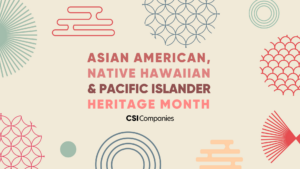
The 2023 theme for Asian American and Pacific Islander Heritage Month is “Advancing Leaders Through Opportunity.” The ongoing initiative encourages building a pipeline of Asian American, Native Hawaiian, and Pacific Islander (AANHPI) leaders who are determined to transform their communities. This theme has never been so important for workplaces, as the need for innovation, diversity, critical thinking, and quality leadership remains vital.
Below are some of the most common technological advancements made throughout history by AANHPI. These inventions have changed the way we live and do business today.
YouTube
Steven Chen, a Taiwanese American, alongside Jawed Karim, a Bangladeshi German American, and Pennsylvania native Chad Hurley, are the inventors of YouTube! The idea for a video-sharing platform stemmed from wanting to share their personal “home videos.” Through their need, they figured others would want to do the same. What started out as a way to watch and share funny videos is now a company estimated to be worth $160 billion.
USB
Indian American computer architect Ajay Bhatt developed several computer-related technologies – his most popular being the USB. Bhatt found himself becoming frustrated by his daughter’s difficulty in connecting a printer to the family computer. He thought something like this should be easy, like plugging an electrical cord into an outlet, so he made it happen. Bhatt brought it up to his workplace, Intel, and together they created a device that simplifies the communication between personal computers and peripheral devices.
Yahoo
Yahoo was founded by Jerry Yang, a Taiwanese American, and David Filo, an American businessman. It was initially called “Jerry and David’s Guide to the World Wide Web.” After gaining popularity, they renamed their website to Yahoo! This was an acronym for “Yet Another Hierarchical Officious Oracle.” It was later acquired by Verizon Communications for $4.48 billion.
OLED Screen Technology
Chemist Ching Wan Tang, a Hong Kong American, helped pioneer the creation of OLED. This stands for Organic Light Emitting Diode. The first OLED product was a display for a car stereo in 1997. It is now used in most electronics that utilize screens and enhances picture quality, contrast, viewing angles, color accuracy, flexibility, and power efficiency.



